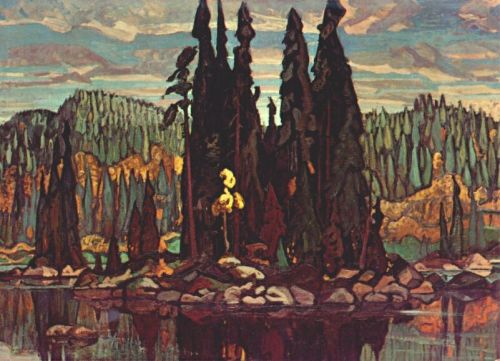As you’ve probably realized, there were more than seven Group of Seven painters, and I’ve devoted more than seven days to them. I love them because they combine the freshness of impressionism with a love for the northern landscape. Here are the last three…
 |
|
The Shadowed Valley, by Frank Johnston
|
Born in Toronto, Frank Johnston also worked as a commercial artist for Grip, Ltd. He exhibited with The Group of Seven only once, in their first show at the Art Gallery of Toronto (now the Art Gallery of Ontario) in May, 1920.
Johnston was an extremely fast painter, which allowed him the luxury of many one-man shows. In 1921, he moved to Winnepeg. He resigned from the Group of Seven shortly thereafter, explaining that there had been no rupture, but that he wanted to exhibit on his own.
 |
| Stormy Weather, Georgian Bay, 1920, FH Varley |
Born in Sheffield, England, FH Varley studied art in Britain and Belgium. He immigrated to Canada on the advice of his friend and future Group of Seven co-member, Arthur Lismer, to work at Grip, Ltd.
Varley was an officially designated war artist during WWI, and is primarily remembered for that work. He accompanied Canadian troops in the Hundred Days offensive from Amiens, France to Mons, Belgium. His combat paintings were based on his experiences at the front.
 |
| Isles of Spruce, 1922, Arthur Lismer |
Varley’s childhood chum Arthur Lismer also studied art in Britain and Belgium. He preceded Varley in coming to Canada (in 1911) to work for Grip, Ltd.
Lismer was also an Official War Artist during WWI, although he was stationed in Halifax, not in Europe. From 1916-1919, Lismer was President of the Victoria School of Art and Design (now the Nova Scotia College of Art and Design).
Join me in October, 2013 at Lakewatch Manor—which is selling out fast—or let me know if you’re interested in painting with me in 2014. Click here for more information on my Maine workshops!
